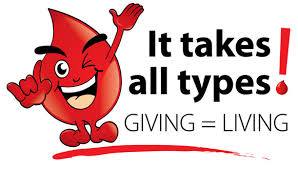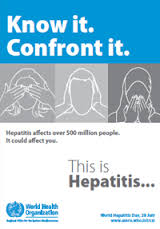 Facts:
Facts:
In 2004 50% of the blood donations collected globally came from high income countries.
65% of the blood transfusions are given to children younger than 5yrs in low-income countries while in high income countries 76% of the transfusions are to people over the age of 65yrs.
In high income countries transfusion are more common for supportive care in cardiovascular surgery, transplant surgery, trauma, and therapy for solid and haematological malignancies. While in low-income countries it is often used to manage pregnancy related complications and severe childhood anaemia.
The per 1000 population of blood donations is 36.8 in high income, 11.7 in middle-income and 3.9 in low-income countries.
73 countries collect 90% of their blood supply from voluntary unpaid donors while 72 countries collect more than 50% from paid or family replacement sources. The over donation from voluntary unpaid donors has increased of 8.6 million from 2004 to 2012
Of the 156 countries reporting blood donations, only 43 produce plasma derived medicinal products through fractionation of plasma collected in the countries while the others import PDMP from abroad.
About Blood Donors:
Gender profiling of blood donors shows30% of the donors are women. While 20 of the reporting countries show less than 10% donations from women.
Age profiling shows more young people donate blood in low and middle-income groups when compared to high income countries.
Donors could be either, voluntary i.e. unpaid, paid or family replacement.
Voluntary donors are the safest group of donors as the prevalence of blood borne disease is the lowest in this group. These groups can assure a stable base of regular safe supply of blood. World Health Assembly promotes the development of this blood system, so that self-sufficiency can be achieved in low and middle-income countries. 60 countries report 100% of their blood supply from voluntary unpaid blood donors, while 25 countries still report collecting paid donations.8 are high income countries, 48-middle income and 16 low-income countries.
Of the 72 countries whose 50% of the blood supply is still dependent of family replacement
Blood Supply
About 108 million blood donations are collected worldwide, of which more than half come from high income countries. There 168 countries reporting, and about 10,000 blood centres, the collection varies according to income group.
Screening of the Blood
The prevalence of transfusion-transmissible infections through blood donation is considerably lower in income countries as compared to middle and low-income one It is a recommendation from WHO that all blood donations should be screened for infections before use. Particularly screening for HIV, Hepatitis B and C, and syphilis.
About 25 countries are not able to screen for either one or more of these infections, the major barrier being non-availability of test kits.
In the high income countries 97% of these screening laboratories are monitored through external quality assessment compared to 33% of middle-income countries and 16% of low-income countries.
Processing Blood
Whole blood transfusion is blood collected in an anticoagulant and is stored in an unmodified state.
When processed into components like red cell concentrates, platelet concentrates, plasma and cryoprecipitate, it can meet the needs of more than one patient.
45% of the blood collected in low income countries is separated into components while 80% separation occurs in middle-income and 95% in high income.
Plasma Derived Medicinal Products: (PDMP)
World health assembly resolution, urges the member states to establish, implement and support a sustainable blood and plasma program nationally that would make them self-sufficient. The individual governments are responsible for ensuring the availability of immunoglobins and coagulation factors which help to prevent and treat various serious conditions worldwide.
43 countries of the reporting 156 countries are self-sufficient when it comes to PDMP through fractionation. Of which 35 countries carry out fractionation within the country, while 8 countries outsource it.
Clinical Use Of Blood:
Patients are exposed to the risk of transfusion transmitted infection due to the practise of unnecessary and unsafe transfusion.
WHO recommends haemovigilance a system developed to monitor and improve safe transmission in hospitals.
111 countries have national guidelines for appropriate clinical use of blood. About 70% of the hospitals performing transfusions in high income countries have this in place the same goes for 50% of middle and low income countries.
WHO Input:
WHO aims to make blood transfusion available and safe. It recommends the following integrated strategy to ensure both availability and safety—
- Establishment of a national blood system with well-organized and coordinated blood transfusion services, effective evidence-based and ethical national blood policies with the goal of achieving self-sufficiency, and legislation and regulation, that can provide sufficient and timely supplies of safe blood and blood products to meet the transfusion needs of all patients.
- Collection of blood, plasma and other blood components from low-risk, regular, voluntary unpaid donors through the strengthening of donation systems, the phasing out of family/replacement donation, the elimination of paid donation, and effective donor management, including care and counselling.
- Quality-assured screening of all donated blood for transfusion-transmissible infections (TTI), including HIV, hepatitis B, hepatitis C and syphilis, confirmatory testing of the results of all donors screen-reactive for infection markers, blood grouping and compatibility testing, and systems for processing blood into blood products (blood components for transfusion and plasma derived-medicinal products), as appropriate, to meet health care needs.
- Rational use of blood and blood products to reduce unnecessary transfusions and minimize the risks associated with transfusion, the use of alternatives to transfusion, where possible, and safe and good clinical transfusion practices, including patient blood management.
- Step-wise implementation of effective quality systems, including quality management, standards, good manufacturing practices, documentation, training of all staff and quality assessment.
Through its Blood and Transfusion Safety programme, WHO supports countries in developing national blood systems to ensure timely access to safe and sufficient supplies of blood and blood products and good transfusion practices to meet the patients’ needs. The programme provides policy guidance and technical assistance to countries for ensuring universal access to safe blood and blood products and work towards self-sufficiency in safe blood and blood products based on voluntary unpaid blood donation to achieve universal health coverage.
Reference WHO fact sheets.
.
 World Hepatitis day July 28th.
World Hepatitis day July 28th.

You must be logged in to post a comment.